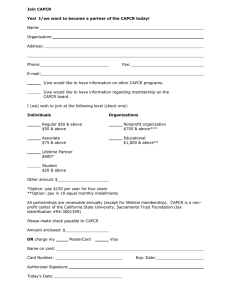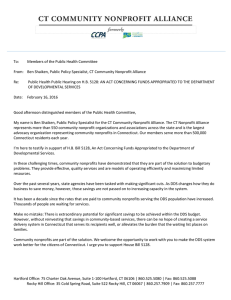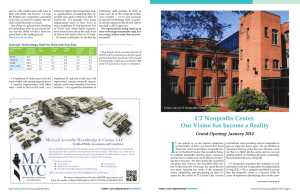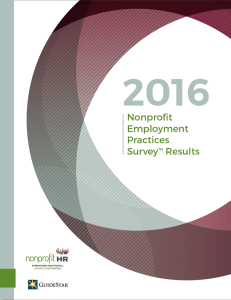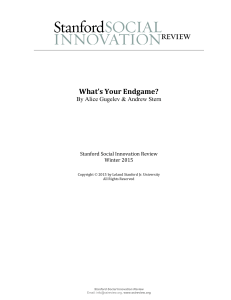What Makes an Org Excellent?
advertisement
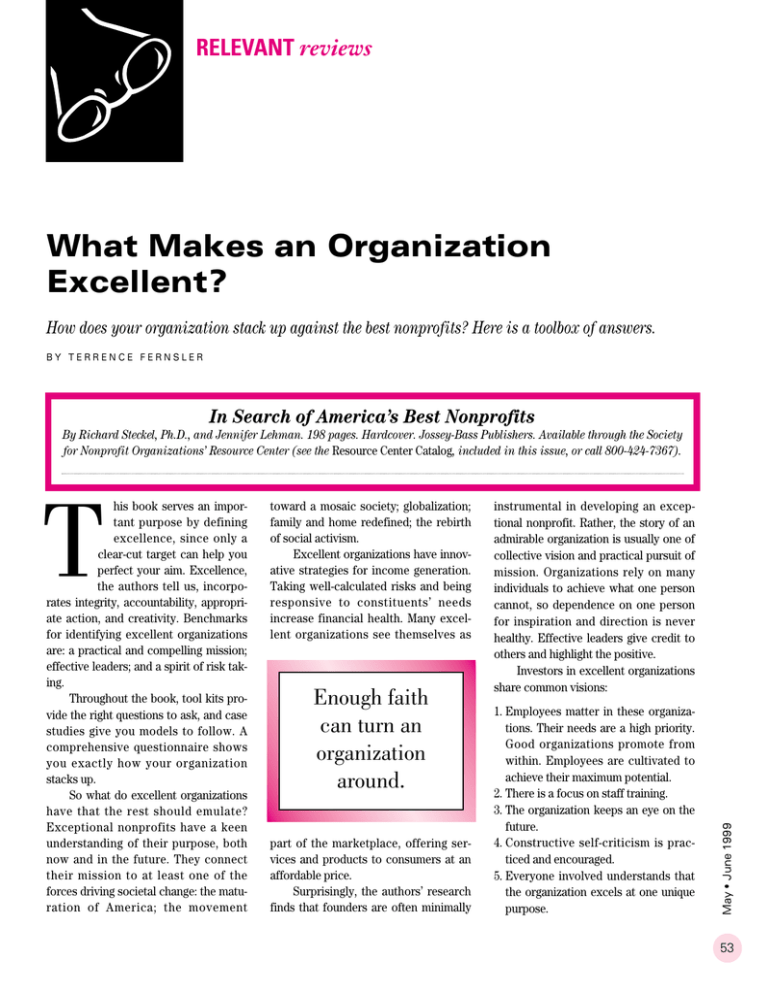
RELEVANT reviews What Makes an Organization Excellent? How does your organization stack up against the best nonprofits? Here is a toolbox of answers. BY TERRENCE FERNSLER In Search of America’s Best Nonprofits By Richard Steckel, Ph.D., and Jennifer Lehman. 198 pages. Hardcover. Jossey-Bass Publishers. Available through the Society for Nonprofit Organizations’ Resource Center (see the Resource Center Catalog, included in this issue, or call 800-424-7367). toward a mosaic society; globalization; family and home redefined; the rebirth of social activism. Excellent organizations have innovative strategies for income generation. Taking well-calculated risks and being responsive to constituents’ needs increase financial health. Many excellent organizations see themselves as Enough faith can turn an organization around. part of the marketplace, offering services and products to consumers at an affordable price. Surprisingly, the authors’ research finds that founders are often minimally instrumental in developing an exceptional nonprofit. Rather, the story of an admirable organization is usually one of collective vision and practical pursuit of mission. Organizations rely on many individuals to achieve what one person cannot, so dependence on one person for inspiration and direction is never healthy. Effective leaders give credit to others and highlight the positive. Investors in excellent organizations share common visions: 1. Employees matter in these organizations. Their needs are a high priority. Good organizations promote from within. Employees are cultivated to achieve their maximum potential. 2. There is a focus on staff training. 3. The organization keeps an eye on the future. 4. Constructive self-criticism is practiced and encouraged. 5. Everyone involved understands that the organization excels at one unique purpose. May • June 1999 T his book serves an important purpose by defining excellence, since only a clear-cut target can help you perfect your aim. Excellence, the authors tell us, incorporates integrity, accountability, appropriate action, and creativity. Benchmarks for identifying excellent organizations are: a practical and compelling mission; effective leaders; and a spirit of risk taking. Throughout the book, tool kits provide the right questions to ask, and case studies give you models to follow. A comprehensive questionnaire shows you exactly how your organization stacks up. So what do excellent organizations have that the rest should emulate? Exceptional nonprofits have a keen understanding of their purpose, both now and in the future. They connect their mission to at least one of the forces driving societal change: the maturation of America; the movement 53 Dependence on one person for inspiration and direction is never healthy. 6. Doing the right thing is standard in the organization. 7. The organization stays mission-driven. 8. There is clear financial accountability. 9. Successes are celebrated. Some would argue with the authors that solid reputation and commitment to an established pattern of success merit the honor of being called excellent. Steckel and Lehman believe, however, that organizations must anticipate change. In their view, a vision for the future, a trust in the ability to innovate, and an awareness of emerging trends are the keys to nonprofit excellence. The best organizations, they say, develop strategies around six trends: 1. Few staff members can state the mission. 2. Budgets come almost entirely from grant-making agencies or the estates of departed benefactors. 3. There’s almost no strategic planning. 4. People don’t talk to each other. 5. The board does practically nothing. 1. public demand for accountability 2. continued reductions in government funding 3. reductions in government oversight 4. technology on the rampage 5. competition for high-quality workers, particularly those with writing skills and critical thinking abilities 6. temporary business alliances and virtual corporations. Yet faith in the organization is key. Having some of these signs doesn’t doom an organization. Enough faith can turn an organization around, as long as it knows what to strive for. ■ In another helpful checklist, the authors detail warning signs of inefficient organizations: Terrence Fernsler is associate director of development for the Mason General Hospital Foundation in Shelton, Washington, and president of the Development Training Institute (P.O. Box 15, 311 W. Martin, Elma, Washington 98541). Nonprofit World • Volume 17, Number 3 May/June 1999 Published by the Society for Nonprofit Organizations 6314 Odana Road, Suite 1, Madison, WI 53719 • (800) 424-7367 Coming Up in NONPROFIT WORLD • Here comes your 21st century workforce! • The top 55 fundraising excuses—and strategies to overcome them • Protecting your organization against financial misuse • Is outcome measurement dead? Nonprofit World, Vol. 17, No. 3 • Make your meetings productive 54 • The politics of risk—Are nonprofits more vulnerable than you think? • How to meet the challenges of the future • The most likely lawsuits—and how to protect yourself • A celebration of community • Use campaigning to win support for your cause • And much more!



